Shandong Building Materials Technology Institute, 1987 Volume 1, Issue 3
Counting and grading small particles by laser diffraction
Basic department Ren Zhongjing Wang Shaoqing
Abstract This paper describes the author's research work on the theory and experiment of particle size analysis by laser diffraction . The theoretical basis and experimental technique of the method are discussed in detail . Two physical samples are measured and the detailed analysis table is made. : A method using a laser diffraction particle counting and classification of small enough particle size of several microns to several hundred microns fully feasible.
Key words Laser diffraction ; particle gradation; particle counting
lead Word
Particular importance in scientific research and production of fine particle counting and classification, and several methods currently common In contrast, laser diffraction has unique advantages , and the most significant and enticing is its rapidity and non-contact, due to information The generation and collection are almost simultaneous, so it is especially suitable for studying the size distribution of dynamic particle groups and the actual control of powder production. line. And non-contact measurement of the physical process and not to make the particles, the chemical nature of the various restrictions, does not produce any dry particles Disturb, so that it adapts to a wide range. Article discusses laser diffraction method for analysis of fine particles of the present theoretical and experimental groups TECHNOLOGY Technique is proposed to measure the actual results of the two powders, and the results are detailed comparative analysis.
DETERMINATION OF TRACE RHENIUM IN MOLYBDENITE BY SPECTRO- PHOTOMETRIC METHOD
Cong Shoujie     Et al
Abstract A new method of dissolving Molybdenite by nitric acid is presented , in this paper, after separation the large part of interference elements : Mo , Mn , Ti , Ca , Mg and Cr, a thioc y anate—ether—mercury extraction is used to remove 1 he last amount of Mo, which enters the solution with rhenium. A sp e ctro—photometric detetrmin a tion of rhenium is taken by thioc y an ate—ether extraction.
This method can be used to determine the trace rhenium in molybdenite and copper concentrate. The procedure is rather simple practical. The error Is ± 10%.
Key words Spectro-ph c tometric ; Â Extaction ; Trace rhenium

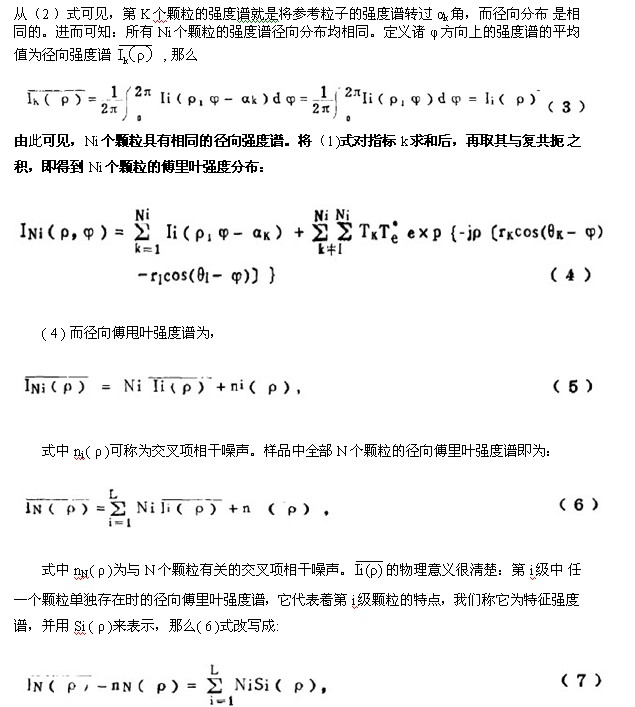
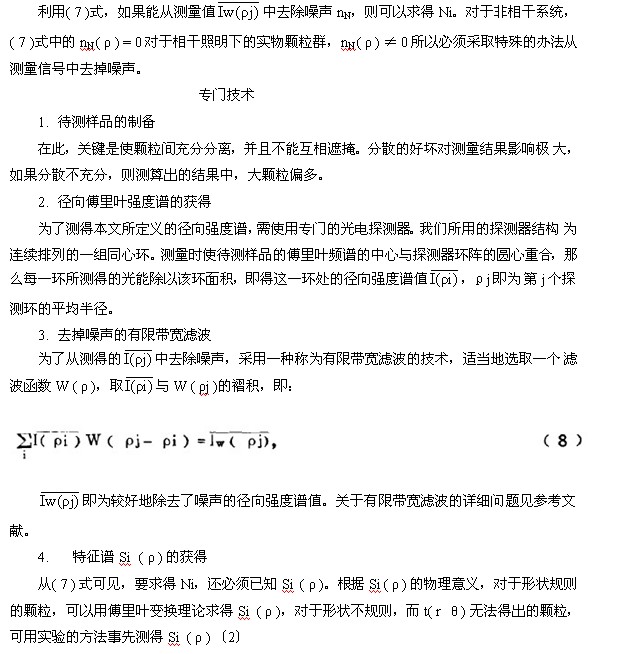
real Test Knot fruit and its Minute Analysis
We provide two kinds of corundum abrasives GZ180 and GZ240 provided by China Grinding Wheel No. 4 Plant and Boshan Cement Plant of Shandong Province. The cement sample R377M was quantitatively measured. FIG 2 is a diffraction energy distribution of FIG R377M, as a first detecting ring number, the second column corresponding to the relative energy values. Wherein "*" curve is found, "#" is a theoretical simulation curve calculated values, consistent both poles, R377M FIG. 3 is a particle size distribution calculation. The first column is the average diameter (μm ) of the divided 12 -level particle subgroup , and the last column is the cumulative weight percentage. Table 1 lists the measurements of GZ180 and GZ240 . The comparison of the quantitative results with the reference data given by the original sample supply unit. The first behavior particle group classification range, the second behavior original sample reference data, the following is the same sample twice sampled by laser diffraction method , the analysis of Table 1 , can be concluded as follows:
 Table 1   The ratio of the size distribution measured by the laser diffraction method of GZ180 and GZ240 to the reference data given by the unit
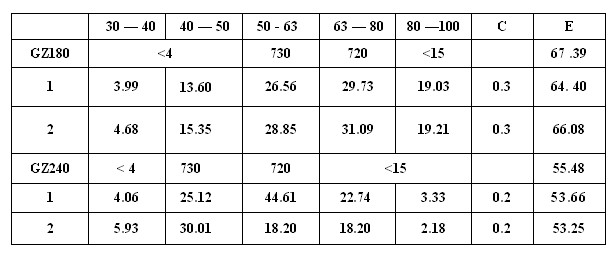
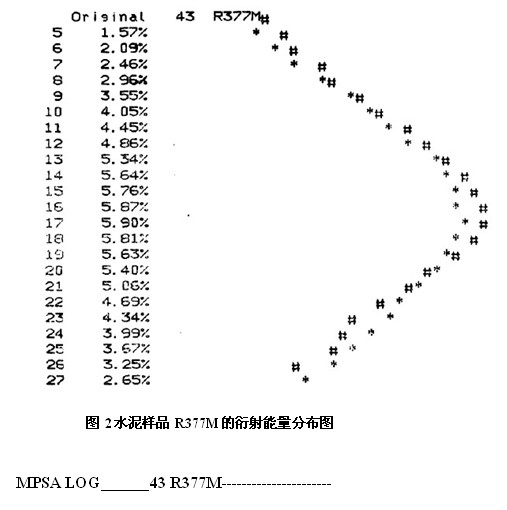
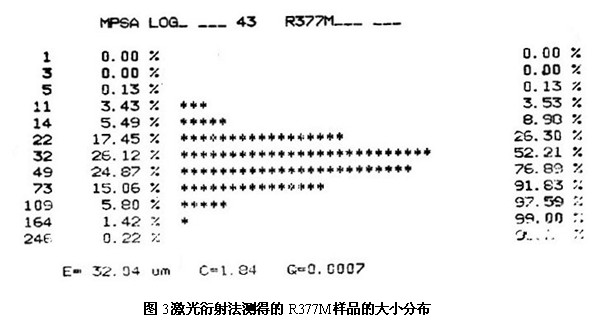
( 1 )  For basic components corundum sample (GZ180 of 50 ~ 80 μm, GZ240 of 40 ~ 63 μm), the measurement results coincide with the reference number;
( 2 ) Â The results of the two sampling measurements are basically the same , reflecting the good repeatability of the method ;
( 3 ) Â A large number of particles measured by laser diffraction method is greater than the reference sample data, which is due to insufficient dispersion of the sample cause;
( 4 ) Â Large deviation at both ends of the distribution section, in addition to said section (3) of the reasons may explain the [3] with the "law of error compensation particle statistics" ;
Cement sample, manufacturers only given sieve residual value, i.e., greater than 1 80 μm particle weight ratio is less than 6%, and its value is substantially equal to the measurement can be seen from FIG. The three levels of 1, 3, 5 μm shown in Figure 3 are zero or very small, which is inconsistent with the actual removal. This is mainly due to the strong aggregation of cement particles and poor dispersion. The smaller the particles, the stronger the aggregation and the more dispersed Difficult . For data processing, we use curve fitting. From the degree of fitting of the two curves in Fig. 2 , the measurement results truly reflect the situation of the particle group to be tested, which strongly illustrates the feasibility of this method.
From the above results and analysis, it is known that counting and classifying small particles by laser diffraction is completely feasible, especially suitable for Distributed in several microns to several hundreds microns particles. After other technologies are perfected , the dispersion of the sample becomes a key factor.
references
[ 1 ] H. Stark, D, Lee, anb B. Dimitviadis. J. O Pt. Soc. Am65, No.12 (1975)
[ 2 ] WL Andevson and RE Beisnen. APPLIED OPTICS/Vol. l 0, No.7/Jul y  ( 1971 )
[3] ( English ) T Ai Wei , "Particle Size Determination " China Building Industry Press , 1984 , P152
Calcium Acetate,Paprika Powder,Sodium Acetate,Beta Carotene
Guangzhou ZIO Chemical Co.,Ltd. , https://www.ziofoodchemical.com